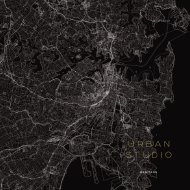WADI Sustainability
Sustainable Architecture Research Studio
Sustainable Architecture Research Studio
- No tags were found...
You also want an ePaper? Increase the reach of your titles
YUMPU automatically turns print PDFs into web optimized ePapers that Google loves.
D<br />
BIOPHILIA<br />
BIOPHILIA<br />
D.1 CONNECT CRITERIA ASSESSMENT METHOD VALUE NO.<br />
D.1.1 Human -<br />
Nature<br />
Connection<br />
Aim: 3 5<br />
D.1.2 Natural Views<br />
D.1.3 Human -<br />
Human<br />
Connection<br />
On a journey to each room or<br />
area of the pavilion, how many<br />
times does the visitor have<br />
the opportunity to interact<br />
with nature?<br />
1. 1 time<br />
2. 2<br />
3. 3<br />
4. 4<br />
5. 5<br />
Percentage of regularly<br />
occupied primary spaces (m2)<br />
that is to have a clear line of<br />
sight to a natural element:<br />
1. >50%<br />
2. >55%<br />
3. >60%<br />
4. >65%<br />
5. >70%<br />
How many spaces are there<br />
for people to socialise and<br />
gather on site?<br />
1 - 5 SCORE = 1 -5 spaces<br />
Interaction with nature<br />
means: the opportunity<br />
to see, hear, touch or<br />
smell a natural<br />
element.<br />
Analysis of visitor<br />
pathways and spaces.<br />
Views analysis in 2D<br />
and 3D model within<br />
8m zone - possible in<br />
most architectural<br />
programs<br />
Achieved =<br />
5<br />
Aim >60%<br />
Achieved =<br />
62%<br />
Analysis of social Aim: 3 3<br />
areas within design.<br />
Achieved =<br />
3 spaces<br />
Total= 11 / 15 (x10) SCORE = 7.33<br />
3<br />
D.2 ACCESS CRITERIA ASSESSMENT METHOD VALUE NO.<br />
D.2.1 Universal<br />
Access<br />
Analysis of circulation Aim: Yes<br />
pathways<br />
2<br />
D.2.2 Age access<br />
Are all areas of the pavillion<br />
able to be accessed by<br />
someone without the use of<br />
stairs?<br />
1. No<br />
2. Yes<br />
Percentage of exhibition area<br />
that is accessible to children<br />
and promotes child interaction:<br />
1. >40%<br />
2. >45%<br />
3. >50%<br />
4. >55%<br />
5. >60%<br />
Observation of<br />
children in building.<br />
Measure exhibition<br />
items height + childfriendlyness<br />
Achieved =<br />
Yes<br />
Aim >50%<br />
Achieved =<br />
50%<br />
Total= 5 / 7 (x10) SCORE = 7.14<br />
3<br />
D.3 EDUCATION CRITERIA ASSESSMENT METHOD VALUE NO.<br />
D.3.1 Sustainable<br />
Awareness -<br />
Pavilion<br />
Aim: 2 3<br />
How many of the pavilion's<br />
sustainable design elements<br />
are on display to the visitor?<br />
1. 0<br />
2. 1<br />
3. 2<br />
4. 3<br />
5. 4<br />
Measure of<br />
sustainable design<br />
points shown in<br />
completed structure.<br />
Possible analysis of<br />
number of people who<br />
visit these points.<br />
Achieved =<br />
2<br />
D.2.2 <strong>Sustainability</strong><br />
Awareness -<br />
General<br />
Percentage of visitors who<br />
leave the pavilion and<br />
incorporate a sustainable<br />
practice into their lifestyle:<br />
1. >20%<br />
2. >25%<br />
3. >30%<br />
4. >35%<br />
5. >40%<br />
Survey of each<br />
participant upon<br />
exiting pavilion.<br />
Additional survey &<br />
reminder email to be<br />
sent out 2 weeks<br />
after visitation.<br />
Aim >30%<br />
Achieved =<br />
30%<br />
Total= 6 / 10 (x10) SCORE = 6<br />
3<br />
TOTAL BIOPHILIC SCORE =<br />
20.5











